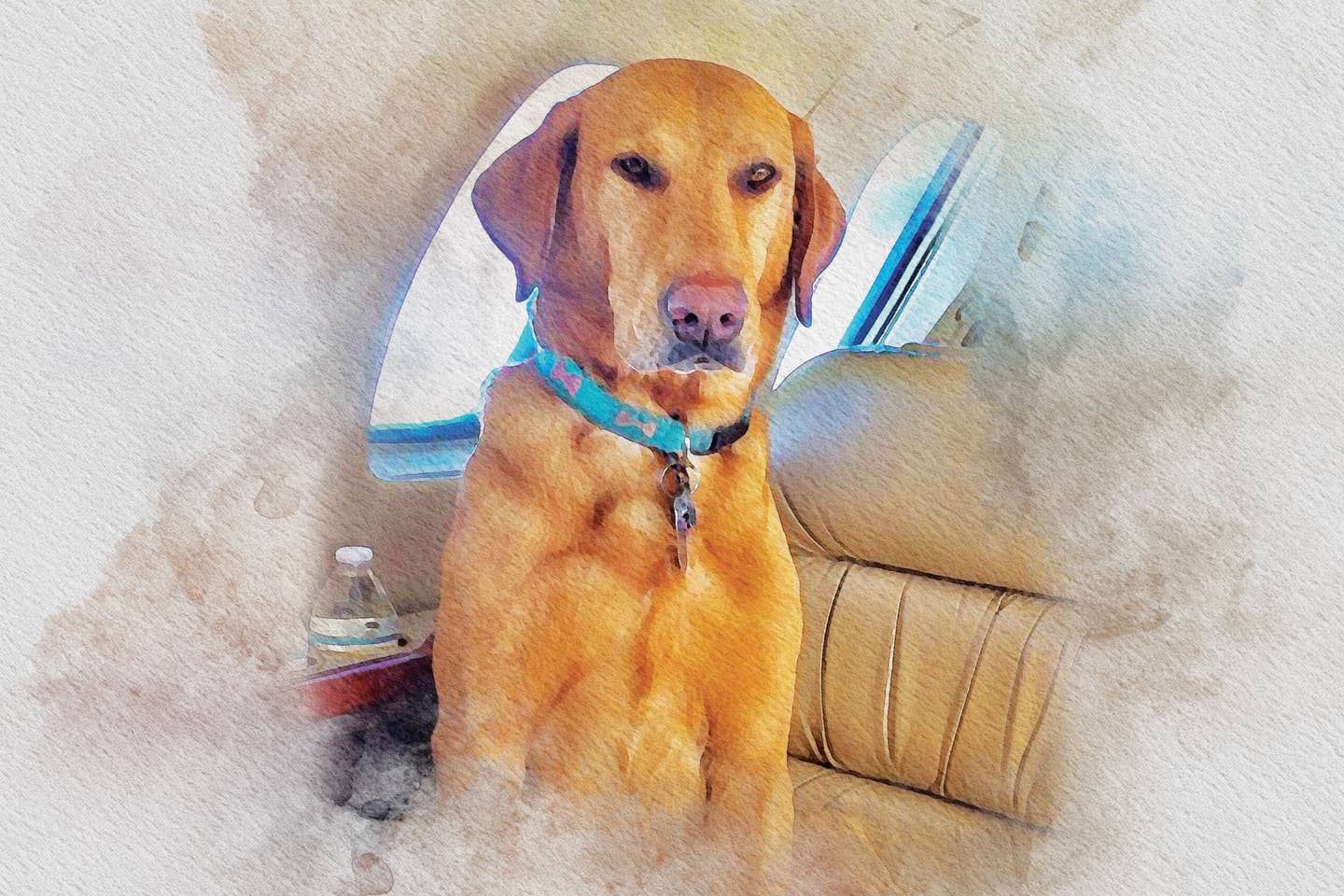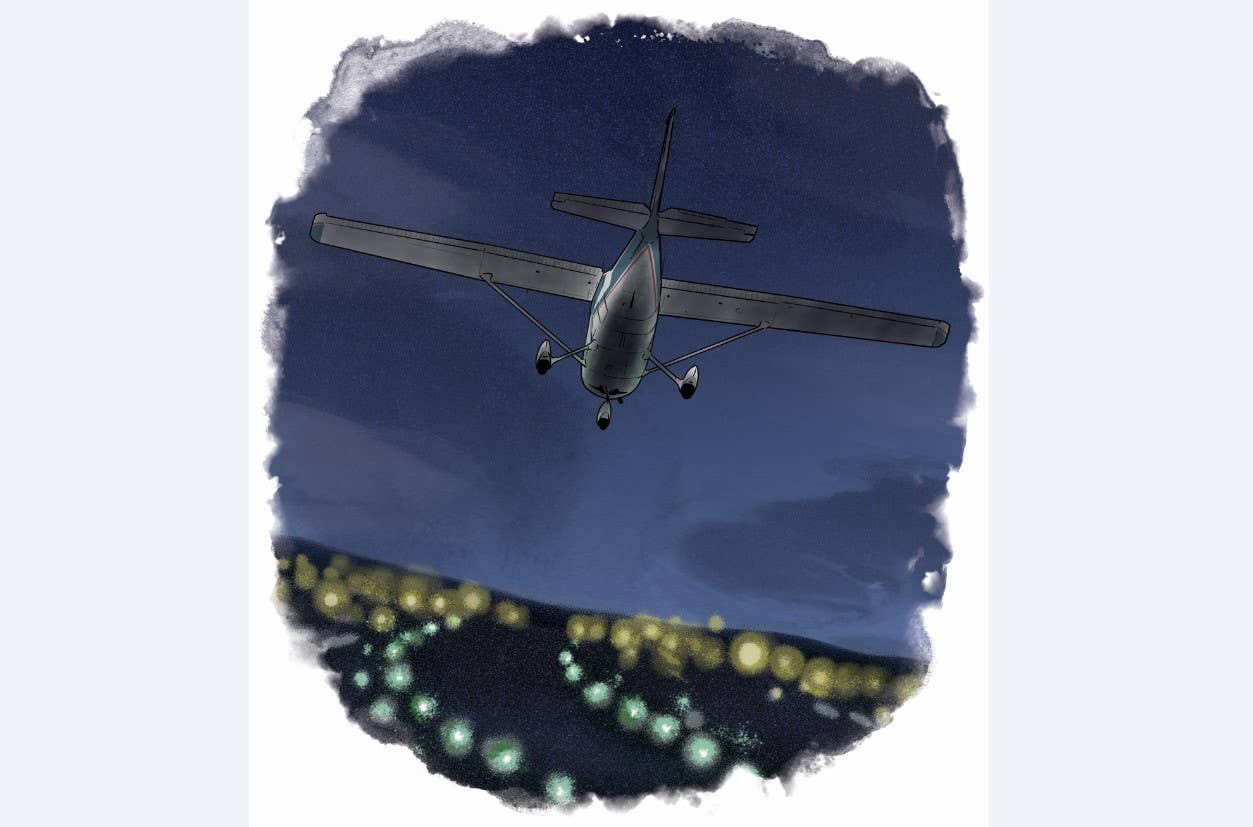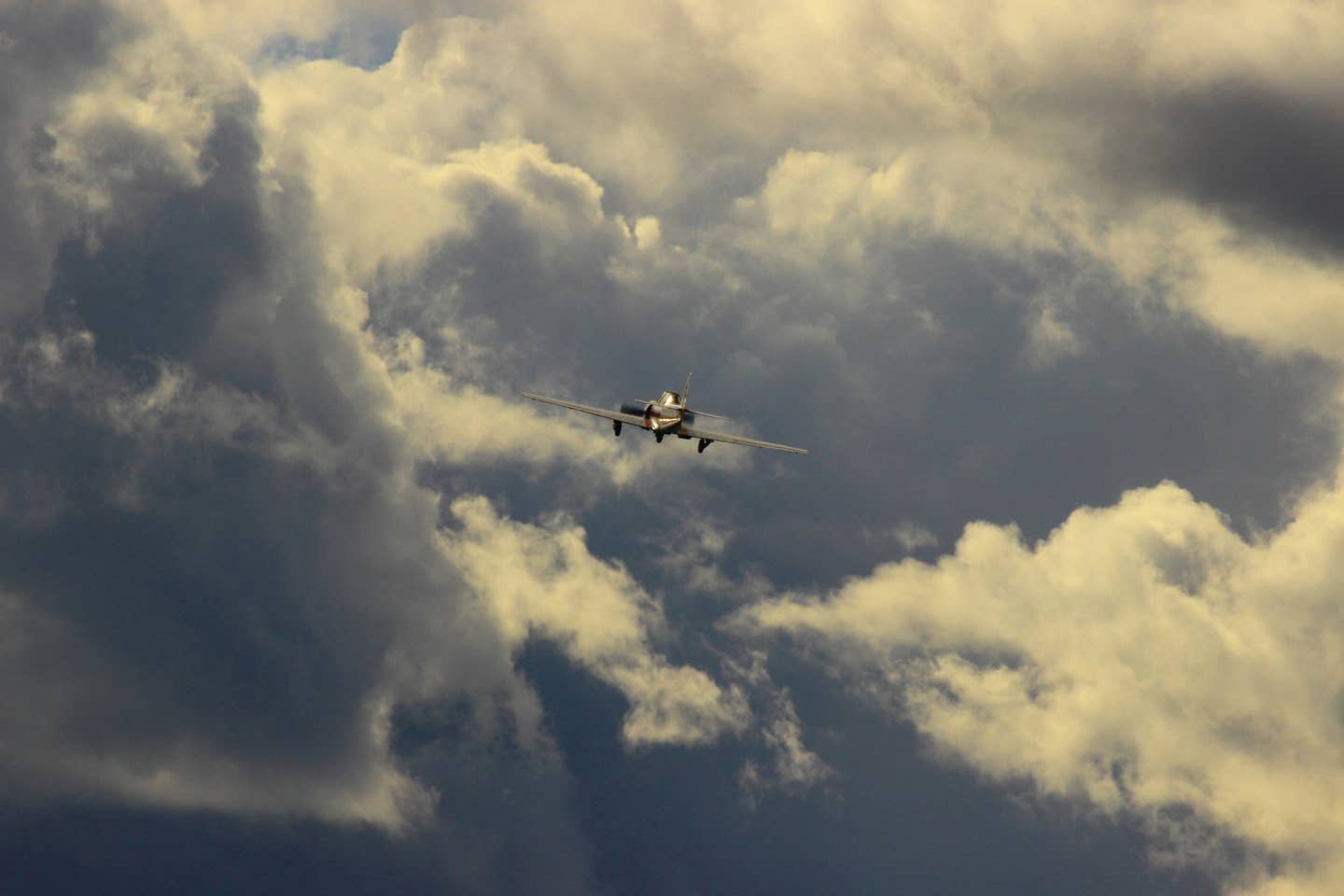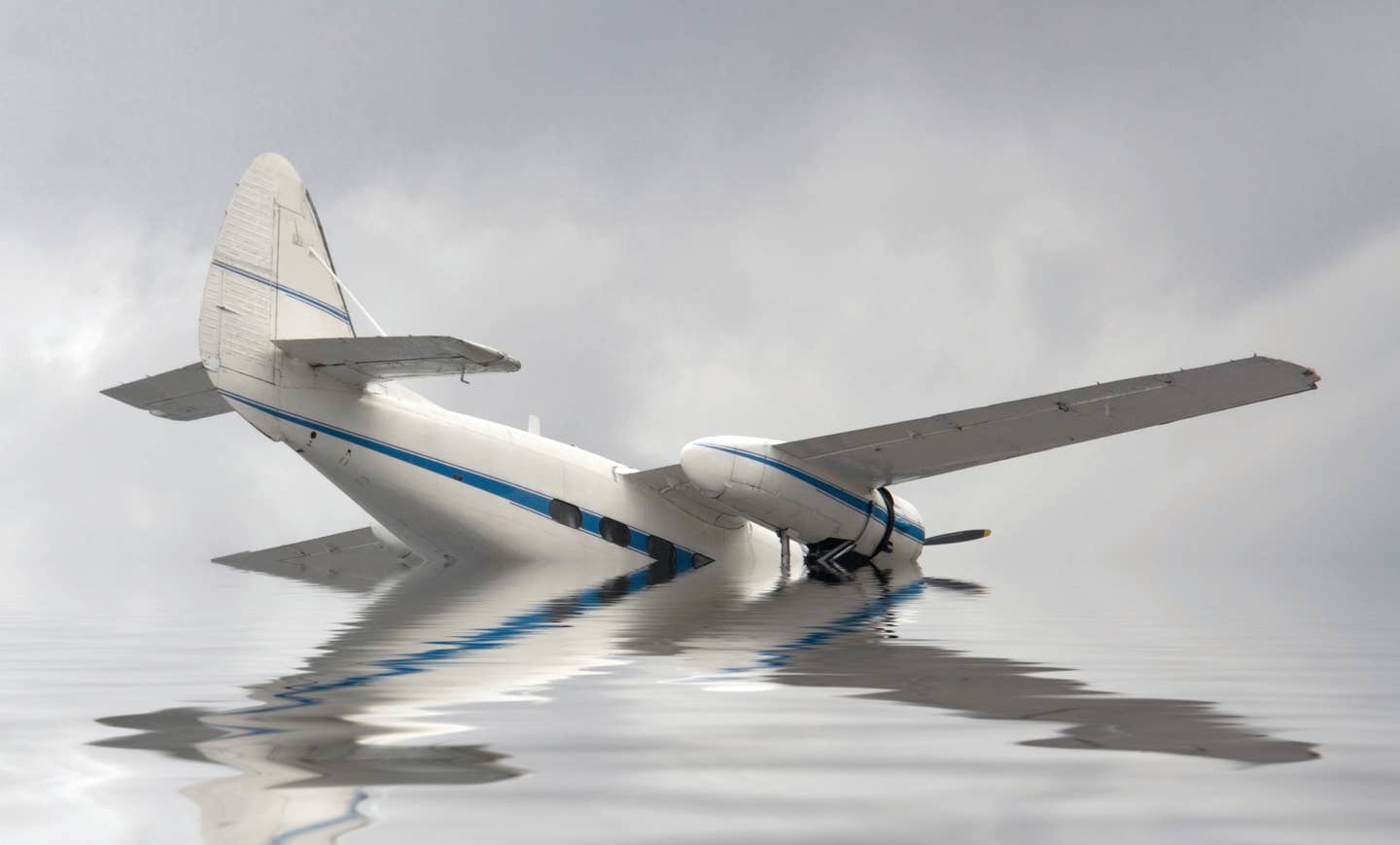
Rocco’s first flight and first airplane was in our 1980 Piper Cheyenne I. He acted
like it was natural to scurry up the airstairs and to make himself comfortable. [Courtesy: Dick Karl/Photo illustration: Amy Jo Sledge; freepik]
He may be from rural Kentucky, but he lives a big-city life. In the eight years I’ve known him, he’s owned four airplanes—a turboprop, two jets, and now a piston twin. He uses general aviation to commute from his home in Tampa, Florida, to his summer cottage in New Hampshire. He handles all this with a weary sense of ennui seasoned with aplomb. He does, however, have his idiosyncrasies. For instance, he hates dogs. His name is Rocco and, well, he is a dog.
I first learned of Rocco from a video posted on a website called “Lucky Lab Rescue.” He looked like the lab mix he was reported to be. Tellingly, he had no “bio.” Usually dogs up for adoption have been fostered and their traits have been cataloged. “Needs lots of space to run” and “not good with children” are a couple of red flags. Rocco had none. He was cute, if a little “mouthy,” on the 20-second video, so my wife, Cathy, and I arranged to have him join a caravan of dogs being shipped from the Midwest to the good folks of New England. Apparently, there is a well-worn path for dogs abandoned at kill shelters to adoption facilities in the Northeast.
If you're not already a subscriber, what are you waiting for? Subscribe today to get the issue as soon as it is released in either Print or Digital formats.
Subscribe NowWe have had excellent luck with labs and lab mixes. We knew Rocco first showed up in a kill shelter in Kentucky and was transferred to a veterinary technical school in Indiana. From the paperwork that accompanied him, we found that he had been used for students to practice putting him under anesthesia and drawing his blood. I’m thinking that might give a fellow an attitude.
It did. Surprisingly, his animosity is not toward humans but dogs. It took several surprise attacks against friends’ and neighborhood dogs before we learned to keep him separated from all canines. His vet hospital and human emergency department visit bills topped 10 grand before we got the picture. We spent similar amounts on dog training with the graduation certificates as proof.
“Why don’t you put him down?” We heard this a lot. There was one problem: We were falling in love. With the kids, grandkids, furnace repair guy, and the pest man, he was an enthusiastic lab love. Our vet said, “I will not put a dog down for dog aggression. Your job is to keep him safe.” That sealed it.
Rocco’s first flight and first airplane was in our 1980 Piper Cheyenne I. He acted like it was natural to scurry up the airstairs and to make himself comfortable in an empty seat. When that became uncomfortable, he’d come forward, put his front paws on the wing spar, and peer into the flight deck with a bemused expression. “Can’t this thing go any faster?” he seemed to say. He’d stare in hypnotic trance at the blinking reply light on the transponder.
It wasn’t long before we decided to buy a jet. Three years of Part 135 flying had finally taught me how, and I felt comfortable with single-pilot jet ops. We bought a Raytheon Premier 1. With its magnificent height, imposing airstairs, and lavish interior, not to mention Pro Line 21 avionics, I was in heaven.
Apparently, so was Rocco. It gradually dawned on us that perhaps this dog had been fibbing about his background. He climbed into the Premier and looked around as if to say, “This is all you got?” I wondered if he’d actually belonged to a family with a Gulfstream. We sent off his DNA to see if he was related to a Rockefeller, but no joy.
Still, he got awfully cozy awfully quickly, though he seemed to look askance at the ornate gold fixtures—not the kind of thing a well-bred dog would accept for haute couture.
- READ MORE: Rescue Dogs and Airplanes
When an errant pelican commuting at 4,500 feet dinged the wing, we sought the comfort of a Cessna Citation CJ1. Not quite as fast as the Premier, but never as maintenance needy, the airplane fit like a glove. Rocco claimed a seat, which we protected with a sheet. There was no question this was a smaller seat than the one to which he had been accustomed, but he took the indignity like a lab. He logged hundreds of trouble-free hours curled up in a ball and ready to party when he arrived.
Alas, my abilities as a dog aircraft provider atrophied with age, and we had to sell the CJ1 owing to insurance costs for “elderly” single-pilot jet ops. Looking to be “unleashed” myself from the aerospace medical boys and girls in Oklahoma City, I chose BasicMed. This led to a fine Beechcraft P-Baron.
And guess what? This is the most comfortable airplane for Rocco. He leaps easily into the back cabin, and the rear seats are so close together that he now effectively has a bench seat. This allows uninterrupted sleep for hours and hours. Rocco is good at this. It’s one of his finest skills. This is a good thing as his commute has become longer and regularly features a tech stop. At such interruptions, he parades around the FBO while Cathy and I keep an eye out for some unsuspecting fellow dog traveler.
We’d hate for him to have a rap sheet in another state. His countenance at the high-end FBOs could be best described as expectant. Just don’t let him spot a Chihuahua with a rhinestone collar—the fur will fly. So far, so good, though—just a dog and his airplane in harmony.
This column first appeared in the November 2023/Issue 943 of FLYING’s print edition.

Subscribe to Our Newsletter
Get the latest FLYING stories delivered directly to your inbox







